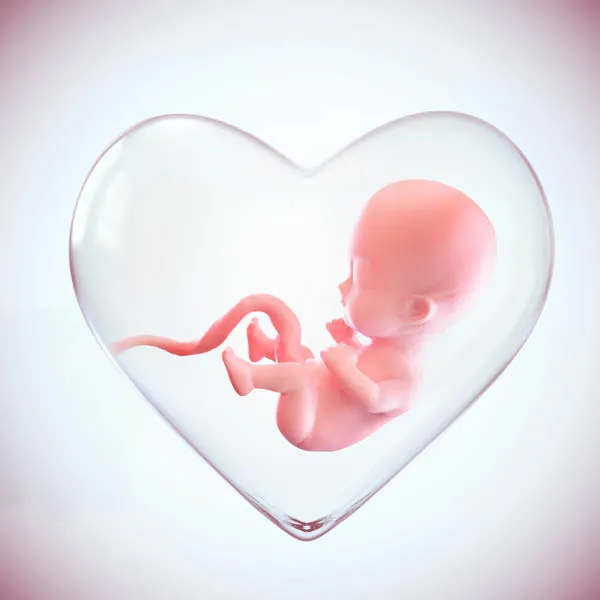A physiological pregnancy lasts 40 weeks, or 280 days. It is divided into 3 stages-trimesters. Each is unique and characterized by different well-being of the mother-to-be and possible complications. Depending on the stage of pregnancy, the mandatory tests are also different. How does the baby develop in the subsequent trimesters and when is a pregnancy considered to be delivered?
Onset of pregnancy
The beginning of pregnancy is a stage that for some women is completely asymptomatic. However, some moms-to-be may experience implantation bleeding, associated with the implantation of the embryo. In addition, there are complaints such as vomiting, breast soreness or excessive fatigue and lethargy.
It is important to remember that many women experience spontaneous miscarriage before they even know they are pregnant. It is believed that as many as ¼ of pregnancies are miscarried at an early stage. This is most often due to genetic defects in the embryo and in most cases does not require further diagnosis.
For the first visit to the gynecologist, after a positive pregnancy test, it is best to go after 5 or 6 weeks are over, when it is possible to make the pregnancy follicle visible. It is considered that the heart function of the baby is visible when the level of beta- HCG in the blood of the mother-to-be is at about 10,000.mlU/ml.
First trimester of pregnancy
The first trimester is defined as the first 13 weeks of pregnancy. For most pregnant women, this is a difficult time with unpleasant ailments. Most often, mothers-to-be complain of nausea, vomiting or mood swings.
The first trimester is a time of intense organogenesis, when all the baby’s organs are being formed. For this reason, it is then extremely vulnerable to so-called teratogenic factors, which can lead to developmental defects. It is particularly important to avoid harmful drugs for the child during this time.
The first trimester is also the time when one of the mandatory ultrasound examinations in pregnancy should be performed, between 11. a 14. Week, aimed at determining the baby’s risk of genetic defects. Therefore, it is often referred to by the term “genetic ultrasound.” This is also the point at which the gynecologist determines the exact age of the pregnancy and the expected date of delivery based on the parietotemporal length (CRL).
Second trimester of pregnancy
Most women feel their best during the second trimester of pregnancy. It is also an ideal time to travel, as the discomforts of the early stages of pregnancy pass and the mother-to-be has more strength than in III. trimester. II. trimester is also the time when you should think about birthing school and start preparations related to layette for the newborn.
However, it is important to be aware of the risks associated with preterm labor. Children born in II. trimester are classified as extreme prematurity. Modern medicine is able to save babies born even in 22.-23. One week of pregnancy. Despite this, the mortality rate for premature babies born at 23. Week of pregnancy reaches 85%, and at 25. Week-is about 20%. To reduce the risk of preterm labor during ultrasound II . trimester, the length of the cervical canal is measured and if it is too short, prophylaxis is implemented, such as the placement of a pessary or suture. Extremely important in the so-called ” midterm ultrasound ” is also a thorough evaluation of the baby’s organs.
IN II. trimester the mother-to-be also begins to feel the baby’s movements. If it’s the first pregnancy, it usually takes place around the 20th. of the week. In subsequent pregnancies, the first movements are often felt as early as 15. week. Usually Parents at this stage of pregnancy also know the sex of their baby. The ultrasound also shows the sucking reflex, and the baby appears, among other things. nails.
Third trimester of pregnancy
The third trimester begins on the 27th. week. It is considered that it is then-or more precisely between 31. a 33. Week-the volume of amniotic fluid is at its highest. Therefore, the gynecologist during the ultrasound 3. trimester should check the amount of fetal waters and check for thromboembolism, for example. Also, in 3. trimester, a woman’s body is preparing for the upcoming birth. It works, among other things. hormone-relaxin, designed to relax the pelvic connections so that the baby is able to pass freely through the woman’s birth canal.
III. trimester is also the stage of pregnancy when the risk of complications such as gestational cholestasis increases. If the mother-to-be experiences itchy skin that intensifies especially at night, she should see a doctor and perform the appropriate tests.
W 3. trimester the baby produces surfactant, which is essential for the proper functioning of the newborn’s lungs. In addition, he can also hear external sounds well, and can blink his eyes. The fuzz present on the baby’s skin (known as lanugo) disappears and the skin becomes smooth. Due to the increasing size, the baby’s movements become more restricted. It is believed that if after 34. week it is in the pelvic position, the chances of it turning on its own are slim.
A term pregnancy
Pregnancy is considered to be carried after the completion of 37. of the week. From this point on, the born child is no longer referred to as premature. This means that it is fully mature and can continue to develop properly outside the uterine cavity. Often, especially in the case of complications arising in pregnancy, such as gestational diabetes, labor is induced to prevent the baby from developing macrosomia and possible related perinatal complications.
Read also:
Pregnancy age-how long is pregnancy?
Rate this article:











